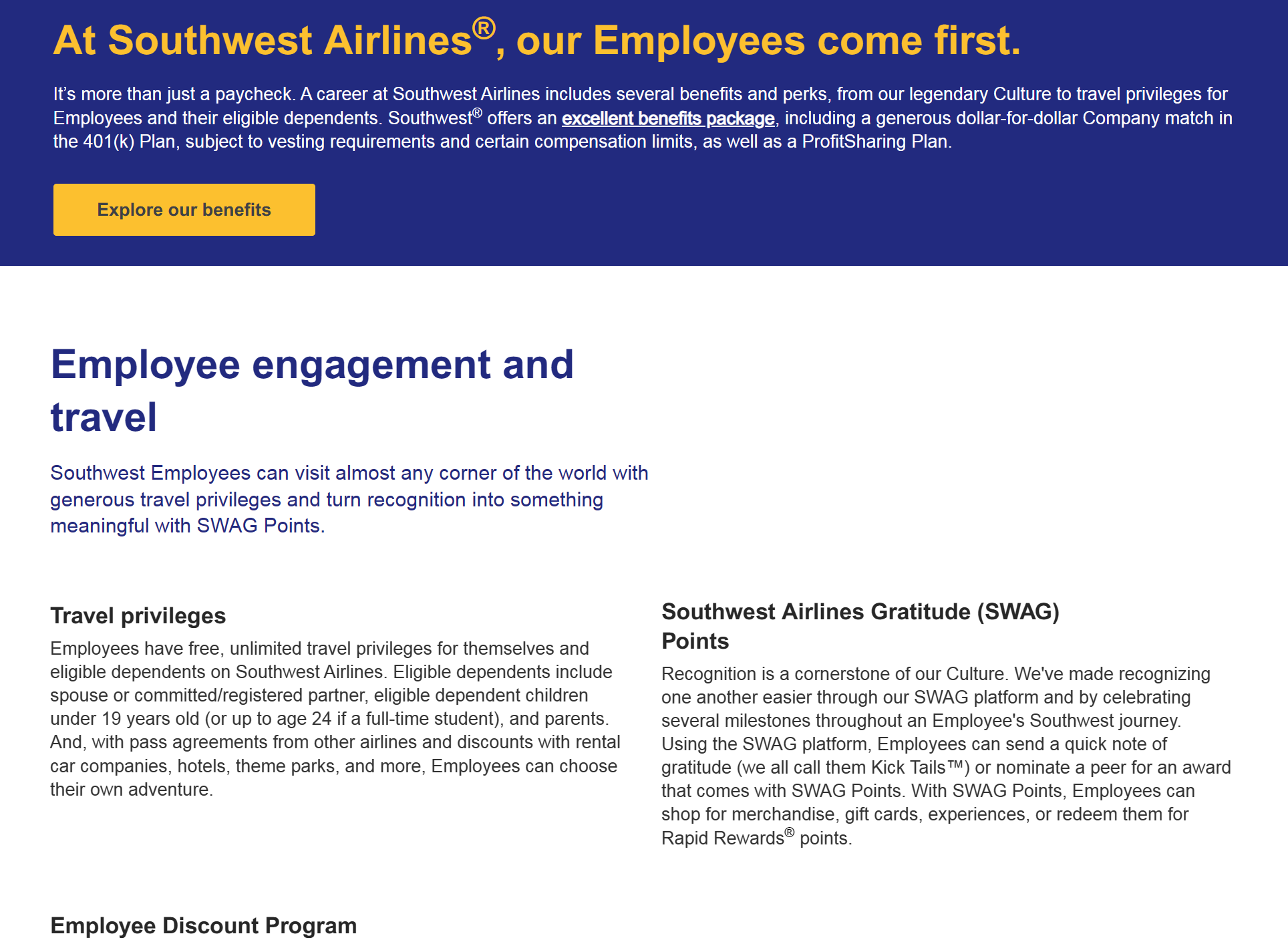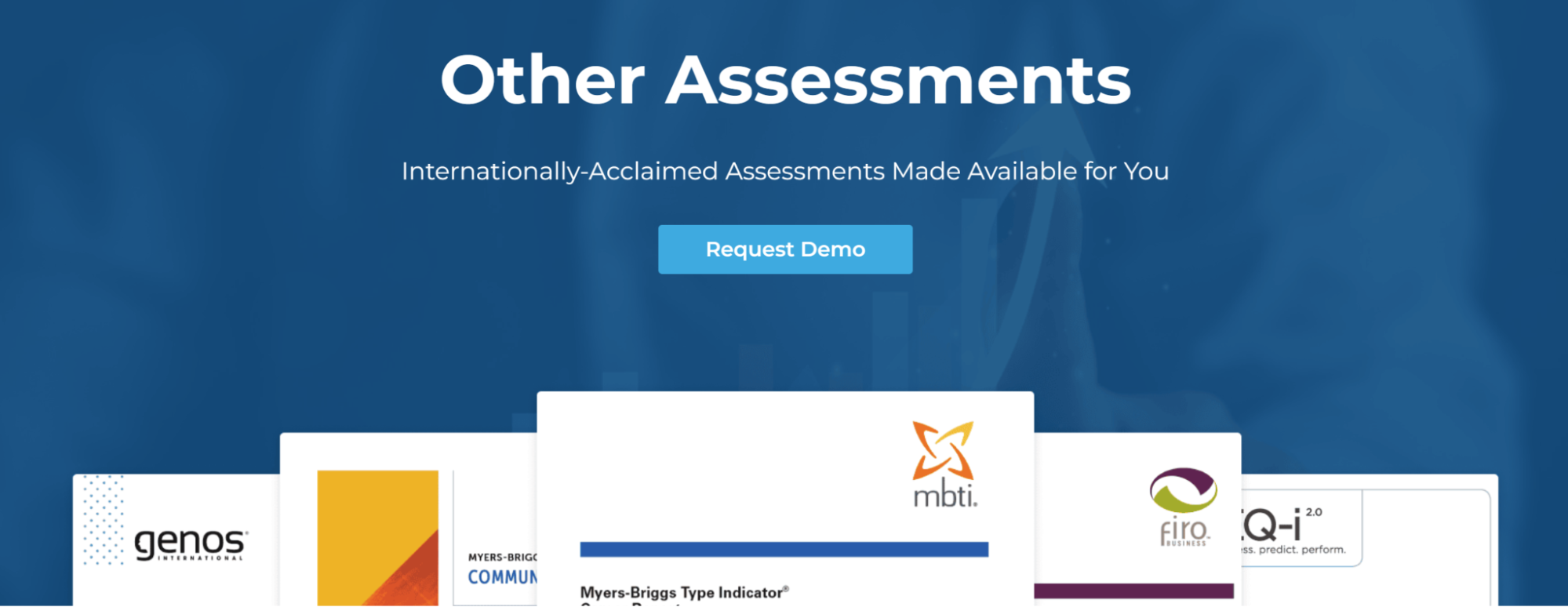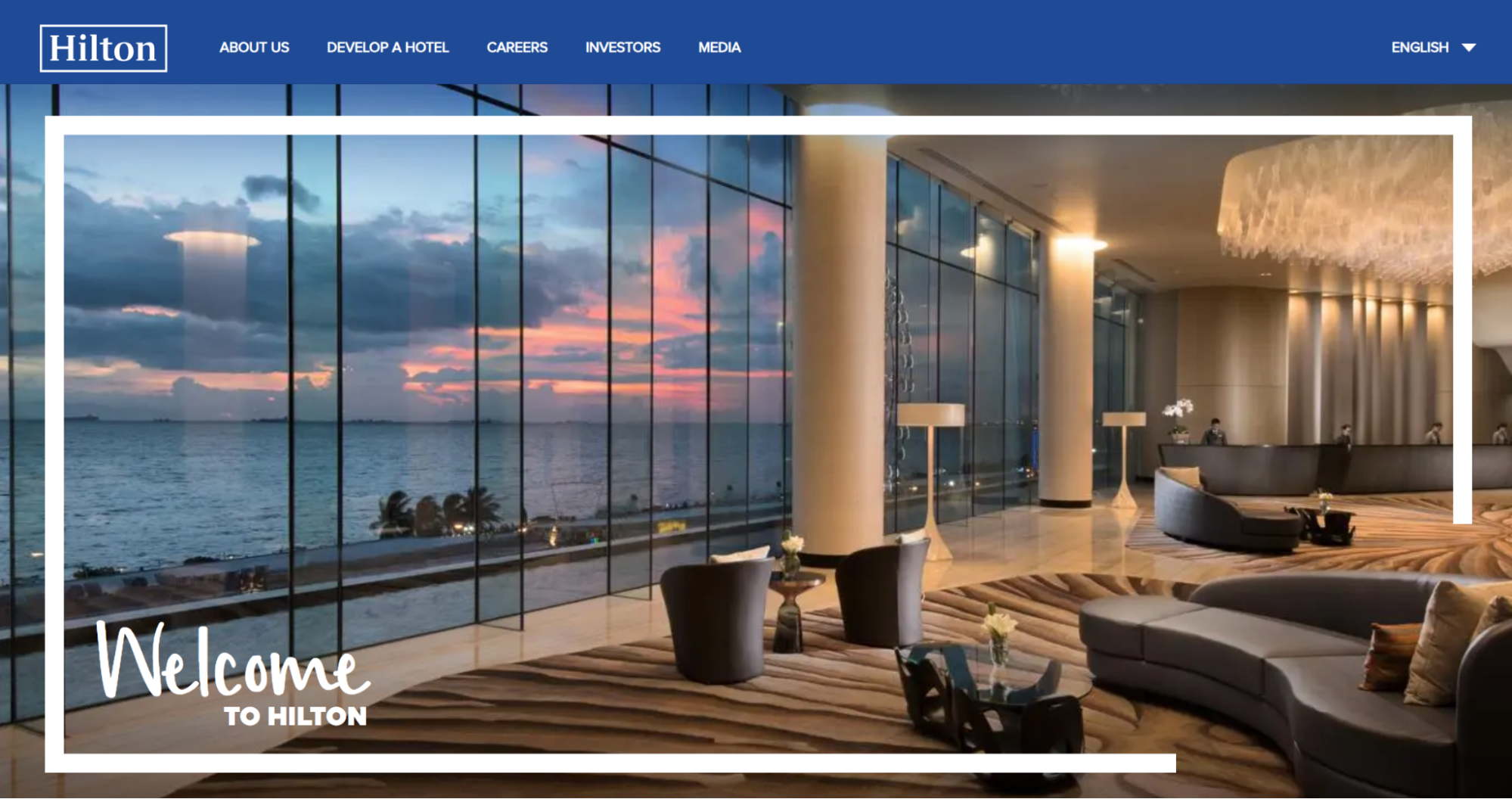Attracting and retaining top talent is essential to the success of any business, and building a desirable workplace can significantly drive your recruitment and hiring efforts.
However, offering competitive salaries and benefits isn’t enough. It requires the inclusion of other elements that contribute to employee satisfaction and engagement. Some of the most influential aspects are company culture, values, leadership, co-workers, and career advancement.
Human resources (HR) plays a pivotal role in establishing and maintaining an enticing and healthy environment. To help you firmly grasp the subject, we’ll delve into the qualities of a desirable workplace, the advantages it brings, and typical blunders that hinder its development. We’ll also explain strategies for cultivating an enticing work environment and provide examples to provide inspiration.
Key components of a desirable workplace
To fully understand the importance of a desirable workplace, we’ll first introduce you to its building blocks.
Clear mission and values
Your organization’s pillars — namely its mission, vision, and core values — align individuals across all levels, from leadership to employees. This creates a shared sense of purpose that allows individuals to work towards an overarching goal.
It’s also a major consideration for job seekers, as this gives them an idea of whether they’d fit in at your company based on whether their beliefs align. Research from Glassdoor conducted across four countries (the United States, United Kingdom, France, and Germany) and found that 79% of adults looking for work would consider a company’s mission and purpose before sending in a job application.
Positive company culture
Culture is complex, as it’s the coalescence of an organization’s interactions and practices, particularly its norms, operations, policies, and employee behavior. A positive workplace environment enjoys descriptors like:
- Supportive: This distinguishes organizations that promote employee well-being and offer learning and advancement opportunities, flexible work arrangements, ample paid time off (PTO), various physical and mental health benefits, and other health-related perks.
- Innovative: You hear this about companies that encourage creativity, experimentation, and risk-taking, particularly in an effort to overcome challenges and come up with groundbreaking products and solutions.
- Diverse or inclusive: This can be said about workplaces that emphasize diversity, equity, inclusion, and belonging (DEIB) in an effort to welcome candidates from various backgrounds and maximize their unique perspectives.
These facets are critical, as the same Glassdoor study we mentioned earlier attests: It discovered over 77% of survey respondents said they consider an organization’s culture before applying.
Growth opportunities
Many people don’t want to stay in the same role for most of their career and seek to advance. Providing avenues for professional development demonstrates your commitment to your employees’ success and encourages continuous learning.
Also, advertise these opportunities to candidates for an effective recruitment strategy; according to 83% of HR managers, training is a powerful tool for attracting talent.
Work-life balance, health, and wellness
Attractive organizations understand that people have lives outside the office and so prioritize work-life balance as a core component of their everyday operations. Allowing flexible work hours and remote work setups, for instance, can appeal to job seekers with non-traditional lifestyles. At the same time, the freedom to pursue personal responsibilities, commitments, and interests can positively impact their well-being, productivity, and job satisfaction.
Health and wellness closely tie into work-life balance and are critical to worker well-being. They’re also appealing to skilled candidates, with employees listing their top five work benefits as follows:
- Employer-covered healthcare
- Life insurance
- Pension and retirement plans
- Mandatory PTO
- Mental health assistance
Transparency
Open communication applies internally and externally. For example, being transparent with your company’s stakeholders involves outlining organizational developments and their impact, as well as reassuring affected parties that their livelihoods aren’t at stake.

Image: IKEA
Providing that degree of transparency for people outside the company can entail detailing your operations, social and environmental impact, and even views on various global issues. IKEA serves as an excellent example of this by clearly outlining their stances and providing annual reports.

Image: Southwest Airlines
You could also publicly share the perks of working for your organization, like how Southwest Airlines dives into their culture and the benefits employees enjoy.
Whether it be your workforce or prospective hires, transparency builds trust around your brand and cultivates a culture of honesty and accountability.
Recognition and rewards
Beyond competitive compensation packages, candidates also want employers who appreciate their contributions and recognize their accomplishments.
To promote an environment that values people who go the extra mile, celebrate worker achievements and incentivize them to keep up the good work. A robust recognition and rewards program enables this and attracts more talent, but what’s most important is that it maintains morale and job satisfaction over the long term.
The broad-reaching strength of a desirable workplace
Now that you know the components of a desirable workplace, we’ll outline the advantages of the final result.
It attracts top talent
An enticing work environment bolsters your employer branding and highlights the value of working for your organization. It places a spotlight on the company’s purpose, culture, and people, all of which are key elements for attracting highly skilled candidates. Strong employer branding allows you to stand out from competitors as well, giving you the edge in fierce job markets.
It enhances employee engagement and retention
A desirable workplace knows their employees’ worth and prioritizes their success and well-being. This allows them to stay committed, motivated, and satisfied, boosting their company’s engagement and retention.
For example, according to LinkedIn’s 2024 Workplace Learning Report, simply providing learning and development opportunities can yield impressive results:
- 90% of organizations worry about employee retention, and providing learning opportunities is their number one strategy for it.
- 7 in 10 people say learning improves their sense of connection with their company.
- 8 in 10, meanwhile, say learning adds purpose to their work.
It improves organizational performance
Employee engagement is a powerful contributor to company success, as those who are invested in it are more willing to go above and beyond. Compared to their disengaged counterparts, workers who are more committed to their role can lead to better business outcomes.
Studies show engagement strongly influences organizational results, with work units in the top quartile outperforming those in the bottom by 21% in productivity and 22% in profitability.
It reduces recruitment costs
Desirable workplaces secure employee loyalty by giving them many reasons to stay. This effectively minimizes turnover, as well as the need to replace, recruit, and train people.
With voluntary turnover costing U.S. businesses an estimated $1 trillion each year and replacing an individual netting you half to double their annual salary, your company can spend less on these expensive activities and enjoy the savings that result from lower churn.
It ensures legal compliance and mitigates risk
A less-obvious benefit of a healthy workplace is compliance with regional and industry laws and regulations.
Whether they be for safety, fair labor, or diversity and inclusion, adhering to relevant legalities minimizes occurrences of workplace discrimination or harassment and in turn averts the risk of ensuing lawsuits, fines, and reputational damage.
For instance, to abide by the Fair Labor Standards Act (FLSA) in the U.S., companies have to establish a job classification system that ensures job duties and benefits are fairly assigned across all employees.
Obstacles on the path to an enticing work environment
Unappealing work environments can give rise to several drawbacks that are essentially the opposite of what we outlined earlier:
- Weak employer branding and difficulty with recruitment
- Lower retention and higher turnover
- Stressed, disengaged, and underperforming employees
- Higher recruitment and training expenses
- Legal risks
To avoid these disadvantages, we’ll explain what impedes positive work environments.
Neglecting employee feedback
One of the best sources of workplace insights are your people working on the ground. It’s then HR’s responsibility to make sure they’re heard, especially when they have workplace grievances.
In Gallup’s 2023 State of the Global Workplace Report on “quiet quitters,” when asked what they would change to make their current employer a great place to work, 85% of respondents provided the following answers:
- Engagement or culture (41%)
- Pay and benefits (28%)
- Well-being (16%)
Acting on this feedback depends on management or leadership, and failure to do so can lead to a disconnect between superiors and their staff. That, then, obstructs any efforts to create a fruitful work environment.
Toxic workplace practices
Toxicity can easily disrupt your employees’ work-life balance, whether it be due to excessive workloads, long overtime hours, micromanagement, a lack of independence, negative behaviors, or workplace conflicts.
No amount of resilience training alone can counteract employee burnout or toxicity’s other negative effects. So, HR needs to work to prevent (or at least minimize) these issues and promote your workforce’s well-being through policies and other initiatives.
Lack of advancement opportunities
As mentioned earlier, many professionals want career growth. If their chances to learn and develop are limited, that can easily cause them to disengage and leave eventually.
This trend resonates strongly among Millennials and Gen Zers in particular, with 74% of employees from these generations likely to quit within a year due to a lack of opportunities for skills development.
It’s not just young members of the workforce either: A significant chunk of workers in the U.S. worry about staying competitive in today’s economic environment:
- 78% fear they lack the competencies necessary for career advancement
- 71% are concerned they aren’t educated enough to grow in their career
- 70% feel unprepared for the future of work
- 58% are worried their skills are already obsolete
Lack of DEIB initiatives
A workplace that’s diverse and inclusive to all types of people is more appealing, seeing how 42% of U.S. employees consider this trait when weighing a job offer. It’s also one of the top six characteristics employees want in their next job.
By overlooking efforts to cultivate DEIB, your organization may seem like it’s perpetuating bias and exclusion, which alienates potential applicants. Deterring individuals with varied backgrounds may even lead to discrimination claims against you.
Unfair recognition and rewards systems
Your company should incentivize and acknowledge contributions and achievements equitably, meaning the frequency and degree should never vary for people who possess the same level of attainment.
An inconsistent approach to rewards and recognition is a sure-fire way to demotivate employees and cause them to harbor resentment towards management and those deemed to be stellar workers.
For example, someone with average output but who’s on good terms with their superiors may enjoy incentives more often than an employee who regularly outperforms. That type of preferential treatment is a catalyst for churn, so assess each individual objectively.
12 Ways to create a desirable workplace
Keeping everything we’ve discussed in mind, you can now take steps to build a workplace that easily draws in prospective hires. To help bolster your efforts, here are some best practices you can utilize.
1) Align stakeholders across all levels
Remember, your organization’s mission, vision, and values act as a compass that guides its overall direction, culture, and its employees’ conduct. So, establish a strong purpose that resonates with everyone in your company and build policies around it. Clearly define and promote it so your business practices and your stakeholders’ behaviors align with both your brand and your goals.
2) Promote and develop emotional intelligence
Emotional intelligence (EI) can act as a pillar of your desirable workplace. This competency enables people to recognize, understand, and manage their and others’ emotions effectively. In turn, that fosters constructive communication, collaboration, and conflict resolution. It also encourages fair decision-making and positive relationship building, which improve your workforce’s overall well-being. Offer EI training to ingrain it in your workforce.
3) Recognize and reward constructive behaviors
Along with making employees feel valued, displays of appreciation for workers’ contributions and accomplishments can convince new hires to stay. In fact, 54% of workers said they’ve quit because they felt overlooked.
Simply incentivizing impressive performance isn’t enough though; to cultivate a positive organizational culture, you must also do the same for beneficial conduct.
Rewarding emotionally intelligent behaviors like positively resolving workplace disputes and reaching win-win compromises emphasizes the importance of EI in your organization.
The incentives don’t have to be grandiose either. For instance, a simple thank you or compliment can encourage the continuation of such behaviors. If you want to give something tangible, a gift card or paid lunch are common options.
4) Invest in employee development
To attract and retain as many skilled individuals as possible, provide ample chances for upskilling and reskilling, whether it be through seminars, workshops, classes, mentorship, or coaching.
5) Personalize employee development plans
A template approach to employee growth may prove ineffective. Let’s say you provide the same learning opportunities to workers in similar roles, but it turns out some personnel aren’t interested.
Individuals have their own needs and professional goals, and how you help meet them will impact your company perception. Instead, tailor individual plans and provide the right types of opportunities to accommodate their aspirations and enhance employee engagement.
For instance, some skills could be easier to teach through mentoring and hands-on experience, while some may only require a quick course. Other people, meanwhile, might be more keen to learn certain competencies than others.
6) Prioritize employee well-being
Well-being encompasses multiple facets of employee welfare, so we’ll break them down separately.
Encourage work-life balance
Work-life balance is extremely attractive, as it gives people the freedom to enjoy their personal interests, commitments, and relationships. To make it a foundational component of your workplace, have managers and HR allow:
- Employees to ask for lighter workloads when needed
- Flexible work hours
- Work-from-home or hybrid setups
- Limited overtime hours
- Ample PTO
Encourage workers to set clear boundaries as well to prevent work stressors from bleeding into their private lives.
Invest in employee health and wellness
Physical, mental, and financial wellness also fall under the personnel well-being umbrella. Besides competitive salaries, consider offering benefits such as:
- Medical or life insurance
- Mental health resources
- Annual bonuses
- Student loan reimbursements
- Parental support
You can even implement fitness programs and have workers participate in physical activities. Show candidates that employee well-being is important to your organization by tackling it during recruitment and including perks in your job descriptions.
7) Take DEIB seriously
Diversity and inclusivity have gained greater significance among today’s workforce, with 76% of job seekers and employees seeing them as important factors when evaluating companies and hiring offers.
To attract a wide range of talented individuals, be transparent about your recruitment and selection process and detail the steps your organization takes to ensure unbiased hiring practices. For instance, highlight how job listings are advertised to various groups and show off stellar employees who possess unique backgrounds.
Include DEIB in your policies and programs as well to support the company’s long-term pursuit of creating an environment that emphasizes belonging and respect.
8) Address issues promptly
Show your commitment to employee well-being and satisfaction by quickly dealing with the concerns and issues they raise, including workplace disputes.
When people with different perspectives, values, and work approaches assemble in one place, clashes are inevitable. Quick conflict resolution is necessary in such circumstances to prevent disagreements from affecting others besides the involved parties.
If left unresolved, project or task progression may halt and cause operational bottlenecks. Not to mention, resentment and tension between co-workers can fester and contribute to workplace toxicity. So, resolve conflicts before they reach a boiling point and aim to reach mutually beneficial compromises.
9) Ask for employee input, be transparent, and communicate openly
We mentioned how people on the frontline are your best source of insights. Open communication and transparency should go both ways though, because acting on feedback that impacts others without warning can result in a loss of trust and engagement.
Launch internal communication strategies and channels that let people discuss their problems and suggestions without fear of negative repercussions. Also teach leaders to be active listeners since they’re a major conduit in establishing a desirable workplace.
To emphasize accountability in your company’s culture, encourage transparency and open dialogue throughout your decision-making and other business processes. Do the same during hiring and selection and keep candidates in the loop.
This remedies any confusion or uncertainty and makes the application process more seamless. It can even improve retention, seeing as poor treatment of employee input results in:
- 41% of workers quitting because they didn’t feel listened to
- 37% left their jobs because the company failed to take feedback seriously
10) Follow a top-down approach
Leaders determine an organization’s culture, according to 76% of U.S. workers.Yet, 36% also feel their superior doesn’t know how to lead a team. Since they’re major drivers in nurturing a positive work environment, hold them accountable. Ensure their practices are constructive, especially when interacting with their teams.
Additionally, hold HR to the same standard. Make sure they prioritize your employees’ welfare given the large role they play in maintaining healthy workplace relationships and well-being.
11) Host team-based activities
An attractive workplace is filled with people who cultivate positive relationships. To foster healthy dynamics among employees, create opportunities for them to build chemistry, trust, and a sense of belonging.
For instance, you could schedule professional development days with games and sports that feature fun situations where co-workers get to know each other. They don’t need to worry about making mistakes either, as these instances take place outside the work setting.
Even simple hangouts after their shifts are proven effective, as team members can use this time to relax and become friends instead of just colleagues.
12) Regularly assess your workplace and adjust your strategy
Achieving a desirable workplace doesn’t take place overnight; it’s a long-term effort that requires consistent evaluation. Direct feedback may not be enough for a definitive measurement though.
Comprehensive assessments can paint a clearer picture of your company and give you a better idea of how attractive it is to prospective hires.

For example, Profiles Asia Pacific’s Fundamental Interpersonal Relations Orientation™ (FIRO®) helps individuals, teams, and organizations manifest positive behavioral changes. It allows people to understand their interpersonal needs and how they guide their communication styles and behaviors. They can then employ that information to improve their personal relationships and professional performance.
We also have the Emotional Quotient Inventory (EQ-i 2.0®), which measures how an individual’s EI impacts others and their workplace.
Based on the results of these kinds of assessments, you can identify areas of improvement and modify your approach for faster, more widespread adoption.
Shining examples of stellar workplaces
At this point, you should have a better grasp of how to make your company more attractive. To further inspire your efforts, here’s a quick look at some of 2024’s best places to work.
Hilton

Image: Hilton
The hospitality giant Hilton’s emphasis on their rich company culture, deep connection with colleagues and customers, and growth opportunities make them the world’s number-one place to work.
Other aspects, however, come to the forefront when considering what candidates look for in an employer.
Comprehensive benefits
To show appreciation for the exceptional hospitality their employees deliver, Hilton provides a deep selection of programs and perks. Besides retirement savings programs, stock purchase plans, and other typical benefits, the brand offers:
- Travel discount program: Massive discounts at Hilton hotels
- Thrive Sabbatical & Thrive Reset Programs: Provides paid sabbatical time and opportunities to pursue socially impactful activities
- Lead@Hilton: Offers leadership development
- Care For All: Resources for eldercare, childcare, pet care, and self-care
- Active N Fit Gym Discount: Gym memberships as low as $25 per month
Diversity, equity, and inclusion
Hilton heavily pursues DEI, building an organization filled with people of all ages, genders, ethnicities, cultures, and more. The company has also formed Team Member Resource Groups that represent various segments of their workforce.
Besides attracting and retaining employees from all walks of life, Hilton also makes a point to create opportunities in local communities as well.
Environmental, social, and governance (ESG)
Regarding ESG, Hilton pursues their Travel with Purpose strategy, which ensures the environmental sustainability of their hotels.
Besides providing opportunities to communities, the company also takes pride in supporting various advocacies and, to demonstrate accountability and transparency, even produces annual ESG reports.
NVIDIA

Image: NVIDIA
NVIDIA is a pioneer in accelerated computing that undertakes impactful work in AI and industrial digitalization. Besides their innovative, politics-free culture, the company possesses multiple aspects that make them one of the world’s most desirable employers.
Corporate responsibility
NVIDIA actively nurtures a space where people can do their life’s work while making sure those efforts positively impact the world as well. For instance, their solutions are developed with energy efficiency in mind.
The company also strives to generate renewable energy that matches their consumption, and their AI endeavors are even aimed at societal use.
Opportunities for everyone
Since the computing giant aims to tackle global challenges through technology, the development of their innovative solutions requires diverse perspectives drawn from various backgrounds and cultures.
To meet that need, they actively hire a healthy mix of distinct individuals and support multiple community resource groups that represent unique workforce segments, some of which include:
- Early Career Network
- NVIDIA Disability Network
- Veterans@NVIDIA
- Women in Technology
Physical, mental, and financial well-being
One of the most enticing characteristics in an employer is how they secure the welfare of their personnel. NVIDIA serves as a shining example of this, providing employees with:
- Various types of insurance
- Retirement plans
- Medical plans
- Student loan repayment program
- Home and family care support
Even interns enjoy some of the same benefits as full-time employees, like:
- Healthcare
- Time off and holidays
- Employee stock purchase plan
- Well-being resources
- Learning and development
Accenture

Image: Accenture
Accenture is a global leader in professional services, employing hundreds of thousands of people in over 120 countries. Three key elements allow the company to attract this much talent.
Inclusion and diversity
Accenture understands that diversity helps drive their innovation, so they made hiring and developing people from all walks of life a pillar of their talent strategy.
In an effort to ingrain equality into their culture, the company also conducts unconscious bias training and specialized learning. They even support pay equity to ensure employees receive the same payment for equal work.
Rewards and benefits
Besides properly recognizing employees for their skills and contributions, Accenture also strives to care for their workers and their families by offering:
- Base pay, bonuses, and performance equity
- Medical, dental, and vision coverage
- Wellness programs
- Flexible work arrangements
- Parental leave and other family benefits
- PTO and holidays
- 401(k) and share purchase plans
Responsibility and sustainability
In an effort to deliver 360-degree value, Accenture strongly pushes sustainability in their business practices, which encompasses their people, supply chain, as well as ethics and governance.
For instance, Procurement Plus dictates the company’s buying approach so their supply chain is built on ethical behaviors, transparency, and similar merits.
Accenture also works with their suppliers to drive positive change, as seen in initiatives like their Supplier Inclusion & Sustainability Program.
Wrapping up — Attract talent and drive performance by creating a desirable workplace
A desirable workplace entails more than competitive compensation packages; it’s about fostering a culture of respect, inclusion, and well-being.
Positive environments are extremely conducive to attracting and retaining top talent, and HR can play a central role in cultivating them by:
- Prioritizing employee well-being, recognition, and satisfaction
- Investing in the workforce’s professional development
- Nurturing a supportive, diverse, and inclusive culture
- Promoting transparent communication
Once your organization embraces these strategies, it’ll be well positioned to become a magnet for top talent and a beacon of excellence in your industry.




